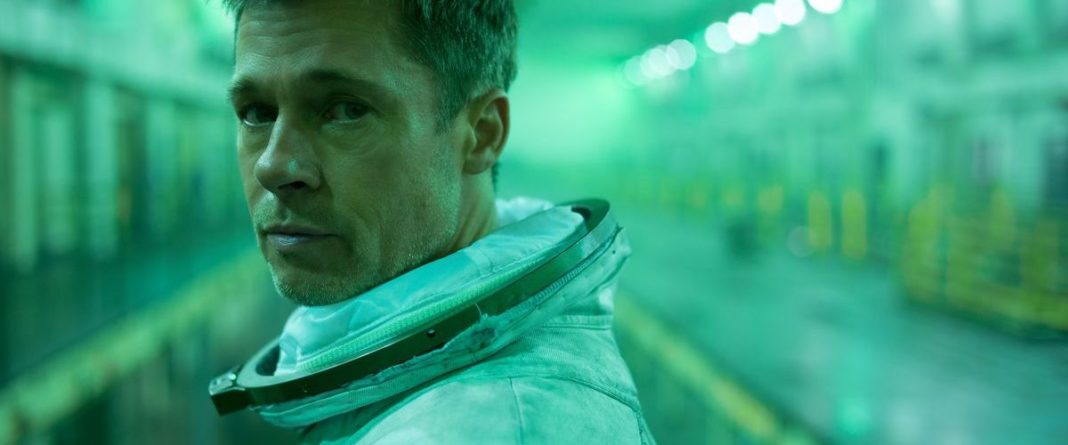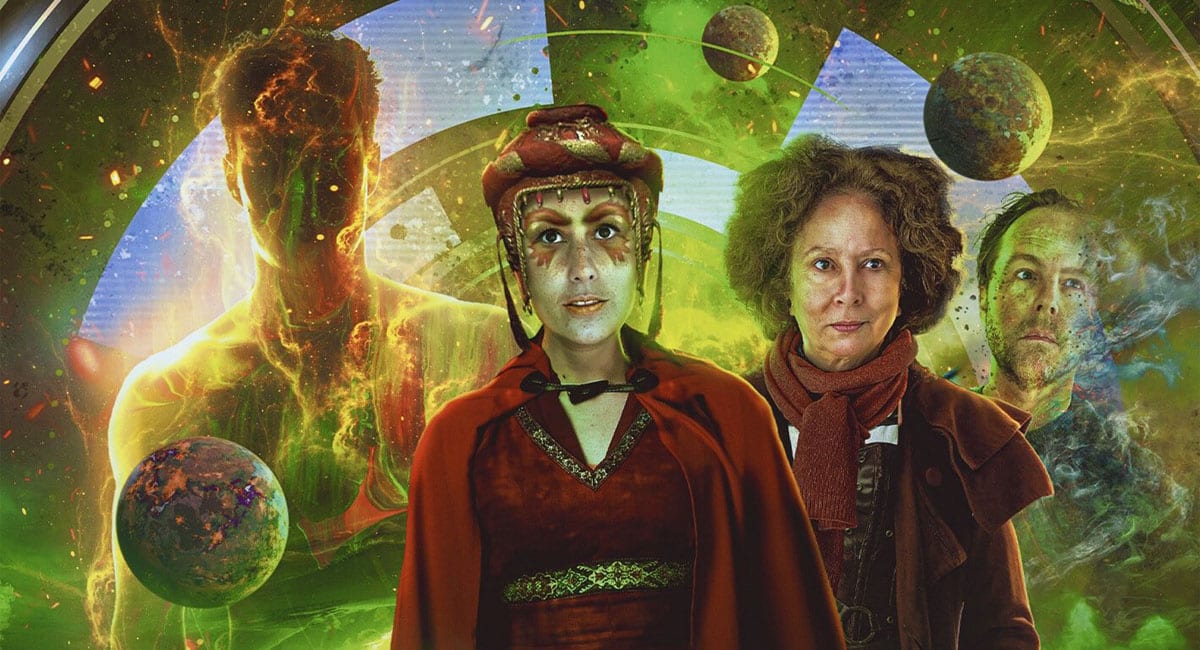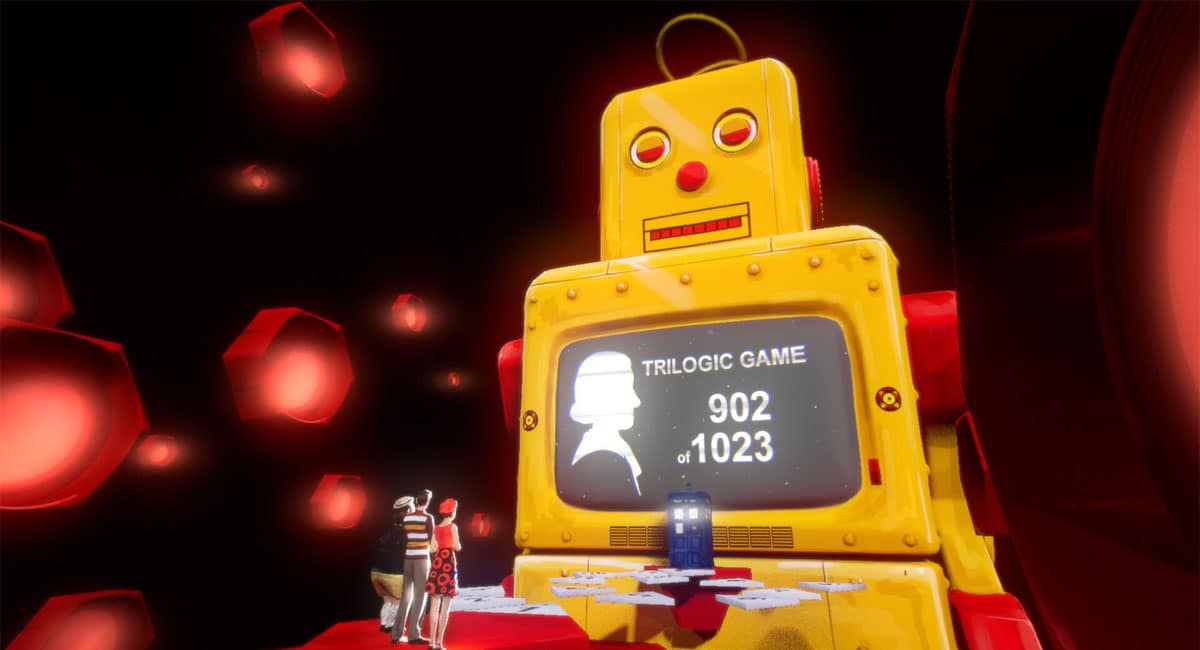Ad Astra is one of those movies you’ll immediately begin comparing to other films when you walk out. For me, those comparisons were favorable: 2001: A Space Odyssey, Interstellar, Mad Max: Fury Road, Solaris. One reason for that is Ad Astra’s propulsive narrative. The film takes us on a journey that involves changing sets and locations, adjustments in tone, and a rotating cast of characters, with Brad Pitt’s lonesome space sailor being the sole through-line in an epic journey. The result is an intensely gripping work of science fiction that feels like an homage to so many cinematic pioneers that came before but still manages to achieve something fresh.
Ad Astra stars Pitt as Roy McBride, a NASA astronaut living in our favorite science fiction locale: the not-so-distant future. Roy’s good at his job, at the exclusion of all else. This includes his personal life, which he largely views as a distraction. Part of that may be down to his upbringing: Roy is the son of a famed hero H. Clifford McBride (Tommy Lee Jones), an astronaut who led a mission to Neptune to search for extraterrestrial life when Roy was a child. The trip ended up being one-way, presumably ending in the death of Roy’s father. Roy alludes to having a difficult childhood without his dad, but he’s reminded of him wherever he goes as his fellow NASA teammates tell him his father is the reason they got into this line of work.
The events of the film are propelled by an electromagnetic burst that nearly kills Roy and does kill dozens of his colleagues on an International Space Station. When Roy is called in to discuss the incident with higher-ups, he’s given a surprising mission: to travel to Mars in an attempt to send a voice message to his father, who NASA suspects is still alive and potentially causing the electromagnetic bursts.
Ad Astra is largely an emotional journey. At a macro level, the film goes to great lengths to showcase the mental trauma astronauts face as they enter the vastness of space – a concept director James Gray said he took from real life events. Roy repeatedly completes psychological exams to prove he’s fit for service, and we see posters clinging to the wall to remind space travelers to get psychological help if they need it. On a micro level, Ad Astra is a story about a son left behind and the father who left him behind, the trappings of traditional masculinity, and whether we are doomed to perpetuate the mistakes of our parents.
The message is a unique one, sometimes hopeful and sometimes melancholy, although the delivery of this part of the story isn’t always graceful. Largely told in overly-poetic voice over where silence would work equally well, Ad Astra struggles most when it doesn’t trust the audience to read between the lines. It’s hard not to wonder if the changes to the release date due to reshoots and revisions to this film are responsible for some of the heavy monologue moments that don’t feel like they belong.
But Ad Astra is equal parts a physical journey, and this part is where Gray succeeds with near perfection. We move from a space station, to Earth, to a commercial flight to the moon – complete with optional $125 blanket and a Subway at the moon’s airport. The movie’s tone manages to hit on all of the best kind of notes we expect from science fiction, easily embracing the dystopian commercialization of the stars while simultaneously allowing us to wonder at them. My favorite piece of the film occurs on the moon, when Roy gets involved in what is essentially a low-gravity car chase that rivals the kind of unrelenting set pieces you see in the more recent Mission: Impossible films. We’re also treated to moments of genuine horror, psychological thrills, and more.
As stunning a performance as Pitt delivers, and as deft of a director as Gray proves himself, it feels like the true MVP of Ad Astra is cinematographer Hoyte Van Hoytema. As theaters get more filled with distractions and expensive in costs, it can feel like you’re better off waiting to see a film in the comfort of your own home. But Ad Astra is a visual marvel, and I’ll be shocked if Hoytema doesn’t find himself up for awards consideration for his work here. It’s one of those rare films that is worth seeing on the biggest screen you can find with the best sound available.
Ad Astra does so much in the confines of its 2 hours. Sometimes, it’s even too much – as is the case with Roy’s ruminative voice overs. But it’s hard not to admire Ad Astra for everything it accomplishes and for the influence it proudly wears on its sleeves. It’s easily the best sci-fi film we’ve had in years as a result.








Saw this last week and it’s excellent, though apparently too “arty” for people who don’t like to think at the movies (judging from some online comments I’ve seen).
Note the Fox logo at the start. Now that Disney has taken control, you won’t see adult-targeted, nonfranchise movies like this getting the green light.
Comments are closed.